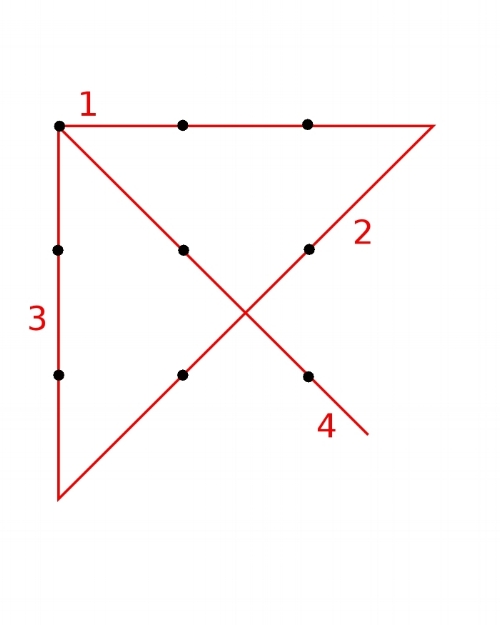Stuck in the Same Rut? Part 2: Thinking Outside the Boundaries
By Karen Carnahan & Marsia Gunter
In our last blog, we discussed the importance of getting out “stuck” ways of thinking by asking questions and asking yourself, “What if?” By posing questions from a “what if” perspective, we are better able to see our options as leaders and business owners. We can truly look at something from a fresh state of mind.
One of our favorite ways we invite people we work with to practice this fresh state of mind is trying a puzzle called “The Nine Dots.”
The Nine Dots
Connect all nine dots by drawing four straight continuous lines without lifting your pencil or retracing a line. Yes, it can be done. Keep trying. (And if you have seen this before, there are at least five known solutions, so if you already know the answer, go for a new one.)
*For the solution, check the end of this blog.
A Way to Think
The solution of the puzzle requires us to see the whole — the dots and the page—not just the dots. (See the solution at the end of the blog.)
This simple nine dot exercise illustrates a way to think outside normal, customary, usual boundaries. It is when we are outside our usual boundaries, then innovation, experimentation, and creativity most often occurs, helping to shape the future into the present. It’s like looking through different camera lenses. The view, and the finished product, is much different when you switch from a zoon to a wide-angled lens.
Bear in mind that you probably already think outside the nine dots in some areas of your life. Most probably already think outside the nine dots in some areas of your life. Most people are more creative than they realize. But most of us tend to see these instances as exceptions or extremes, something only appropriate in particular spheres of our lives. Often we label this kind of thinking as “radical” or “maverick”. We don’t realize that thinking outside the nine dots is a perfectly good way to approach everything.
Questions to Ask Yourself
- Where in my life do I already do this kind of thinking?
- How can I transpose that thinking style or skill to the workplace?
- How does this nine dot exercise apply to my business? My work?
- Do we, at this company, think inside or outside our nine dots?
- What is an example of “outside the nine dot thinking” in my business? My work?
- How often do we limit ourselves by being inside the nine dots?
Key Points for a New Way to Think
Solution to The Nine Dots
When you move outside the nine dots, you are in a space called “I don’t know, I don’t know.” It can be a hot seat, prickly and uncomfortable. But it is also frequently the source of your most creative insights and decisions. You have to be willing to be in that space long enough and innocently enough for the exciting new breakthrough to happen.
Take those Post-it Notes we all use. The inventor did it by accident – he was really trying to make a new kind of glue. He would up with something that seemed to stick, but not permanently. If he had closed his mind to everything but the glue he was supposed to be making, then he’d have thrown out this latest efffort as a failure. But by being willing to look outside the nine dots of what he was supposed to be doing, he came up with a whole new possibility, a product that never existed previously.
When you move into the “I don’t know, I don’t know” space outside the nine dots you are, knowingly or unknowningly, moving beyond the sphere of “the right way.” That can be the start of something wonderful.
Are you interested in taking a more active role in shaping the future for yourself, your company or your organization? Explore the future you want to create through ongoing coaching to develop business growth strategies, professional leadership development and business ownership, and transitioning your business for the next generation. We believe in the future you envision, and stand with you to help achieve it.


